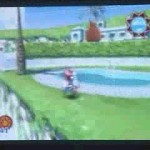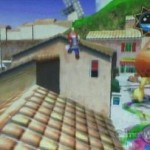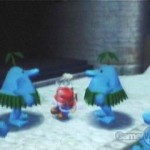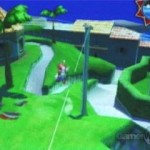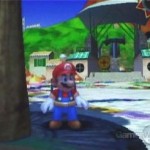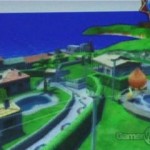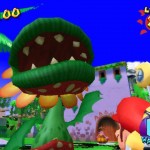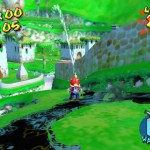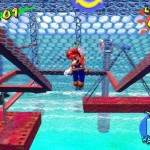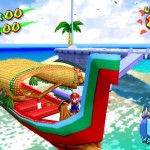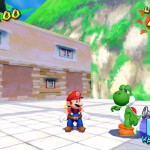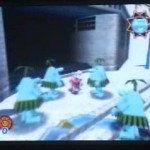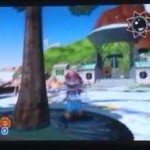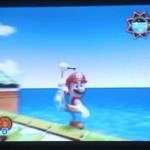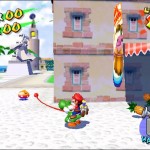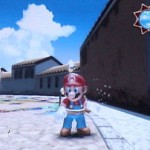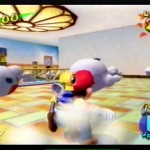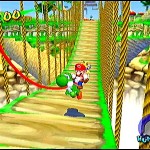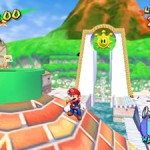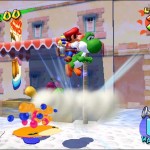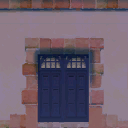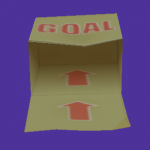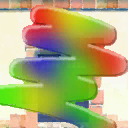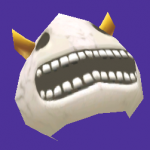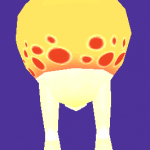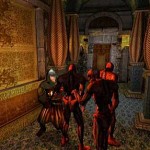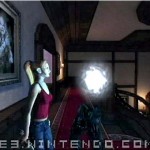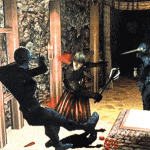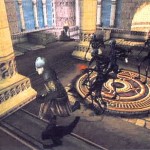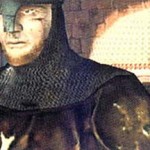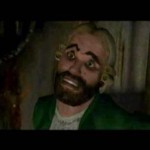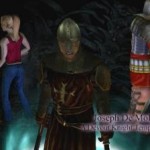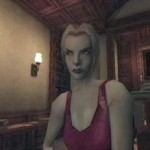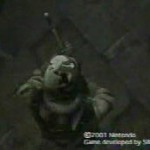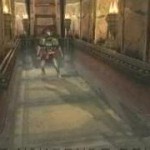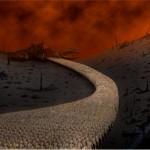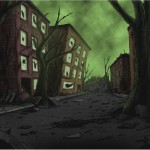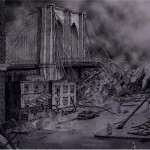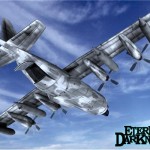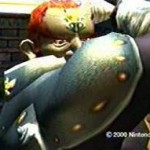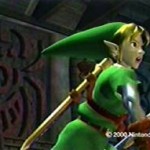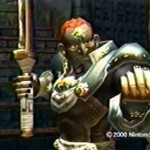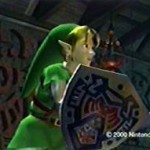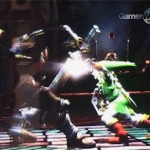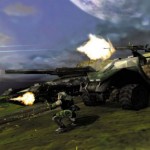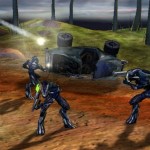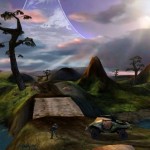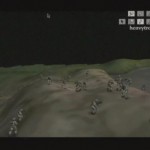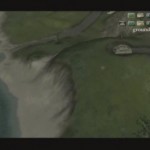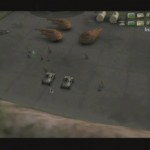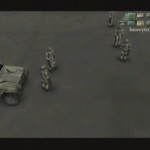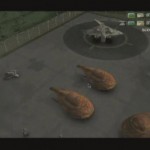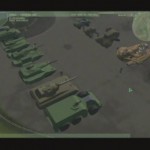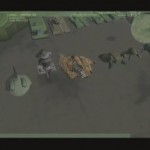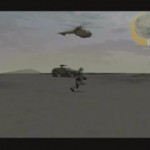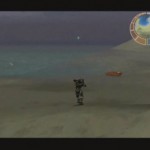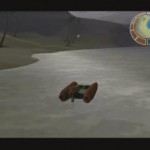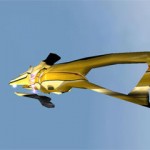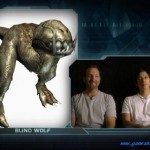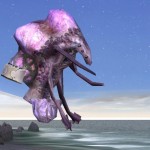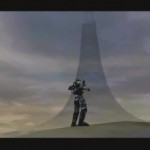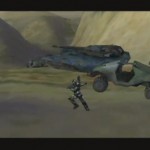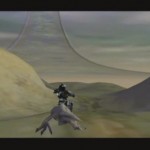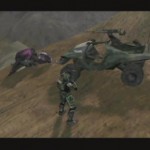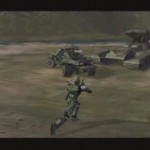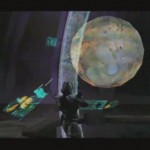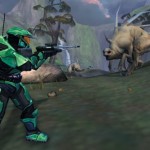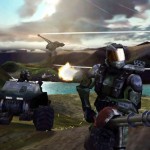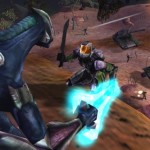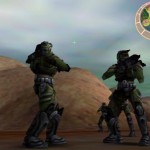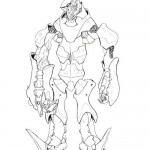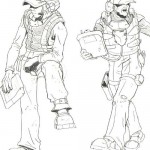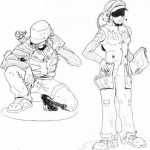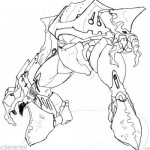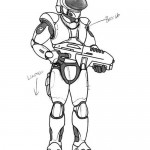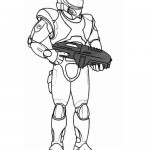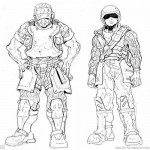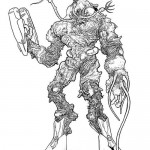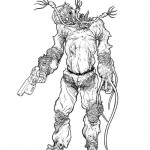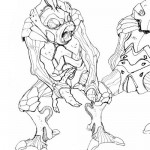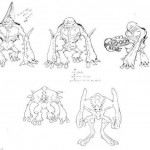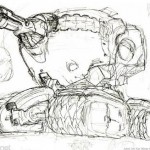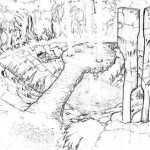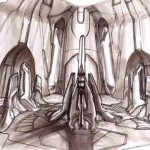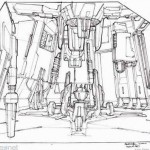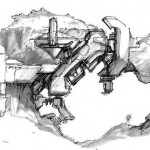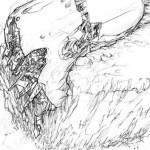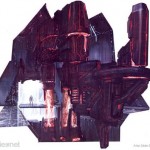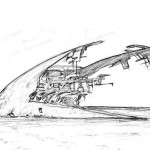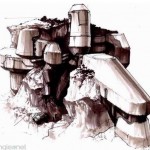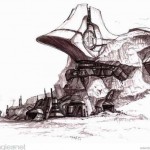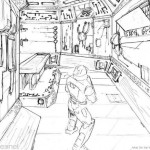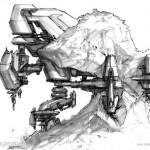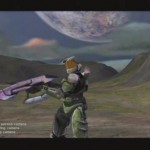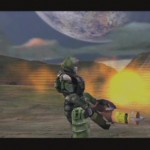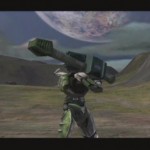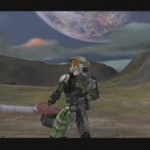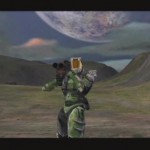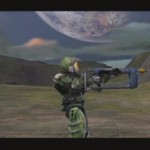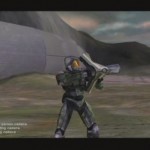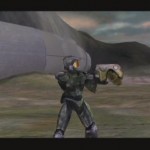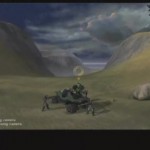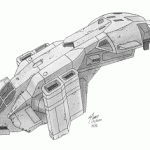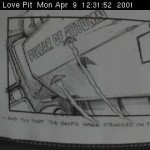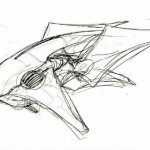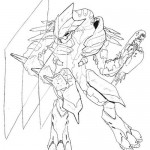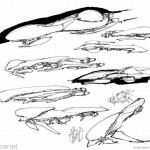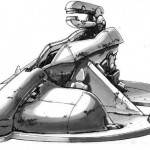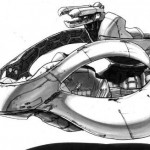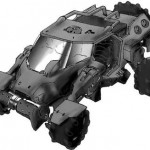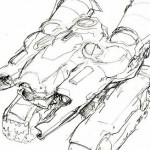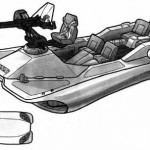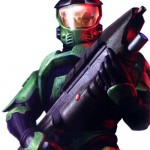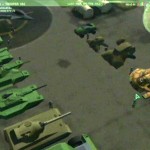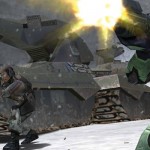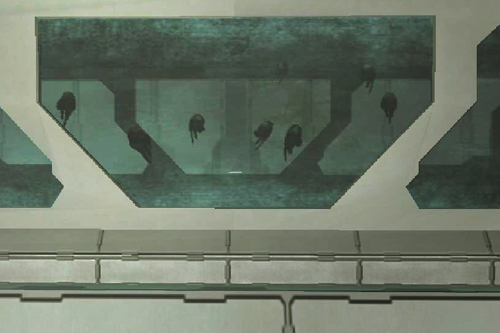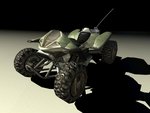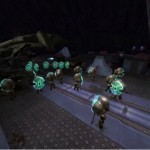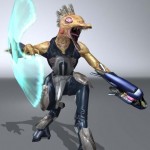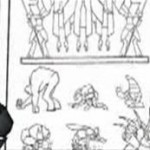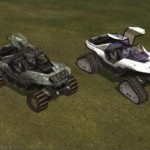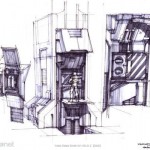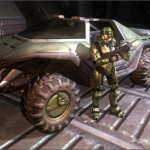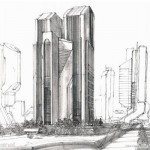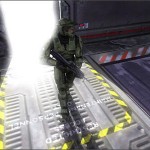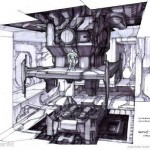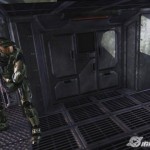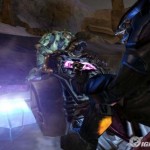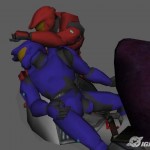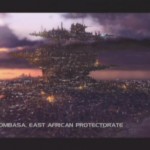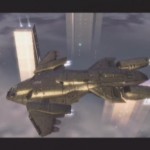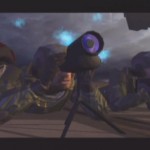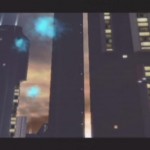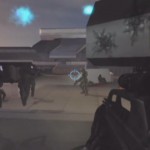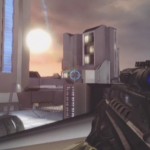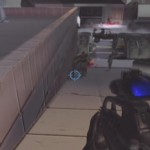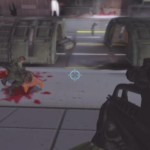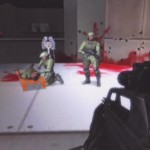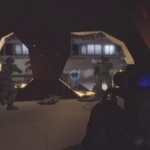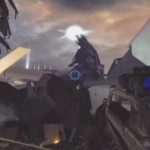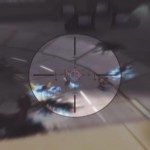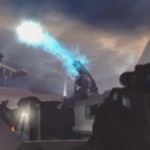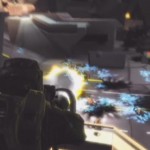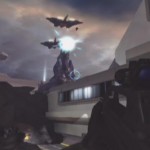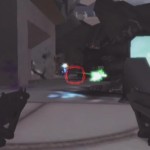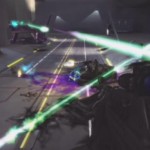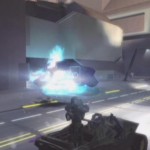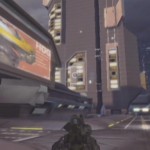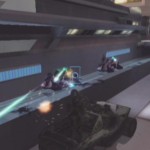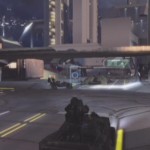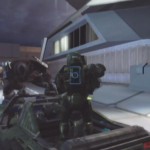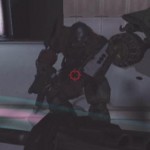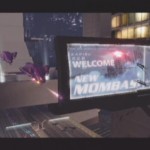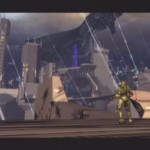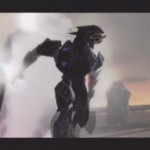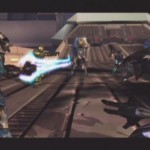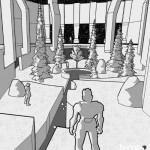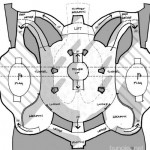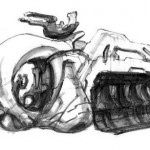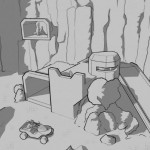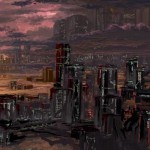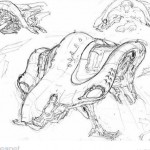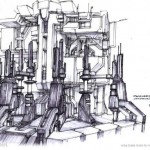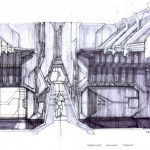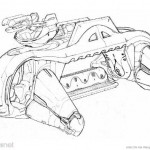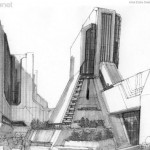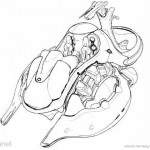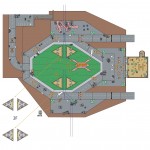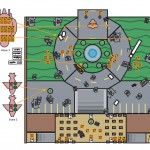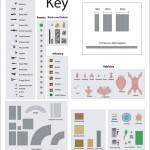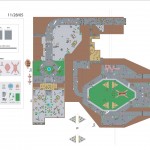Among the first Gamecube games revealed at Space World 2001, along with Zelda: Wind Waker, was a new Mario. In the presented video, Mario seems to stop to rest in the shade of a tree – that combined with the new sun/water HUD led many fans to believe the HUD was a thermometer that could detect real world temperature and report when the player should take a break. This was wild speculation. Now that we have all played the final game, it is clear that the HUD simply states the amount of liquid present in the “spray”.
After playing the final version of Mario Sunshine you may notice that this early beta shows a level that was not used in the final game. The city in the beta was probably just a test-level to try all the new elements: cables, swimming pools, spots to clean, balls (later become fruit), palms, new enemies and other objects that appeared in different areas throughout the game.
English translation by 8PM – Thanks to Jay for the english corrections!
The beta also reveals that humans were initially intended to be citizens of the plaza. FLUDD was going to be skinnier and Gooper Blooper was going to be dark blue and fought on top of the bridges of Ricco Harbor instead of in the market and helicopter area. There were some abandoned sprites as well, including Yoshi vomiting any water he may have swallowed.
There was also going to be a brown Pokey, and they were going to have white flowers. A test level is playable through an Action Replay. There the player can see Rock Blocks that were edited out, possibly in favor of Watermelons. Also, a small book can be found in an alcove of a cave in the bottom of the bottle in Noki Bay’s third episode. In one of the screens, Mario stands with Boos in the background, but their models are completely different. [Infos from Mariowiki]
In December 2009, Zeek from the X-Cult Forum posted some interesting models that are hidden the code, but unused in the final game, as a skull mask, the big beta enemy from the Space World video, called the Tramplin’ Stu, and a cardboard box with a “goal” text on it. As we can read at Rusted Logic Wiki, Super Mario Sunshine contains a test level which can be accessed with the Action Replay code JKGN-DDJZ-D58XJ FYUM-N4P3-QJUPC. A Tramplin’ Stu is in the test level, but it’s graphics are screwed up.
There is an enemy in the test level called “Hinokuri” that spawns, walks into a pit, then walks through a wall and disappears. You can kill it, and it drops a coin. This was probably a test enemy. This is the same enemy that was shown stomping around in early Super Mario Sunshine footage. One of the models in the game and its accompanying animations imply that some versions would have worn a large skull helmet.
Hinokuri spawns two types of enemies, dubbed “Swoopin’ Stu” and “Strollin’ Stu”, from a cone-like nozzle on its back end. One of these two enemies is spawned before the creature walks away. Swoopin’ Stus are spawned via a striped egg, while Strollin’ Stus simply appear.
Goomther noted that the model has a special property, which prevents the Tramplin’ Stu from displaying properly in both the test level and in model viewers.
![]() [spoiler /Clicca qui per la versione in Italiano/ /Nascondi la versione in Italiano/]Il primo video del gioco apparve insieme a quello di Wind Waker allo Space World del 2001, e indubbiamente lasciava presagire molte novità. Se il logo in basso a sinistra infatti stava a segnalare con ogni probabilità il numero di stelle (o chi per loro) raccolte, quello in alto destra era del tutto ignoto al pubblico. Il contorno con dei raggi di sole e l’acqua nel mezzo, unito al fatto che Mario durante il video sembrava fermarsi a riposare all’ombra di un albero, indusse molti a pensare che fosse una sorta di termometro capace di rilevare la temperatura dell’ambiente e segnalare conseguentemente all’idraulico il momento in cui si sarebbe dovuto riposare e rifocillare. Pura fantasia, poiché, visto il risultato finale, è evidente che quel logo indicava semplicemente la quantità di liquido presente nello ‘spruzzino’ di Mario.
[spoiler /Clicca qui per la versione in Italiano/ /Nascondi la versione in Italiano/]Il primo video del gioco apparve insieme a quello di Wind Waker allo Space World del 2001, e indubbiamente lasciava presagire molte novità. Se il logo in basso a sinistra infatti stava a segnalare con ogni probabilità il numero di stelle (o chi per loro) raccolte, quello in alto destra era del tutto ignoto al pubblico. Il contorno con dei raggi di sole e l’acqua nel mezzo, unito al fatto che Mario durante il video sembrava fermarsi a riposare all’ombra di un albero, indusse molti a pensare che fosse una sorta di termometro capace di rilevare la temperatura dell’ambiente e segnalare conseguentemente all’idraulico il momento in cui si sarebbe dovuto riposare e rifocillare. Pura fantasia, poiché, visto il risultato finale, è evidente che quel logo indicava semplicemente la quantità di liquido presente nello ‘spruzzino’ di Mario.
Ora che è uscito il gioco non possiamo far altro che notare che questa demo non mostrava un livello vero e proprio, nemmeno la città di Delfinia, ma piuttosto un contenitore dove testare i nuovi elementi inseriti in Mario Sunshine: cavi, piscine (le fasi in acqua hanno un controllo molto diverso rispetto a quelle di Mario 64), macchie da pulire, indigeni, palloni (poi divenuti frutti – da segnalare che nel 2002 si disputarono i mondiali di calcio in Giappone), palme, nuovi nemici e altri oggetti apparsi poi in diverse zone nella versione definitiva.[/spoiler]
[Thanks to sba sb3002 for some of these images!]
Images:
Videos:
Super Mario Sunshine Spaceworld 2001 Trailer

